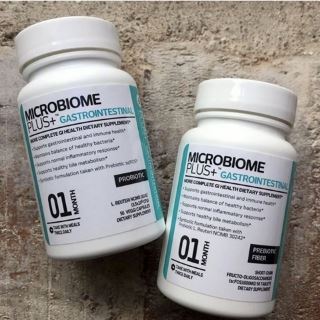100+ Heart Health Facts & Cholesterol Statistics (2022)
Heart disease is the number one cause of death worldwide. High cholesterol and an unhealthy lifestyle are the biggest risk factors. How many people have high cholesterol? Are women more likely to have heart disease than men? How does age play in? Discover the latest stats and facts about cholesterol and heart health from scientific studies, the CDC, AHA, and WHO.
Disclaimer: This page provides an overview of heart disease and cholesterol facts and statistics. It is for informational purposes only and is not meant to provide medical advice. Please talk to your doctor about your health concerns and consult them before taking any supplements or making changes to your supplement regime.
What is this page about?
This page is your go-to resource on heart health statistics and facts. We compiled trusted information about high cholesterol, heart disease, high blood pressure, stroke, and more—updated with 2022 data wherever available.
You can find the sources of information at the end of each section from the the Centers for Disease Control and Prevention (CDC), the World Health Organization (WHO), the American Heart Association (AHA), and peer-reviewed scientific publications.
This page cites 30 trusted references in total.

Quick Facts About Cholesterol & Heart Health
- Most people who have high cholesterol levels and/or high blood pressure have no symptoms, so getting checked is the only way to know your status.
- High blood cholesterol increases the risk of heart disease—the leading cause of death worldwide and in the U.S—and of stroke, the fifth leading cause of death in the U.S.
- Cholesterol levels depend on your genes and lifestyle.
- Most risk factors for heart disease and high cholesterol are modifiable!
- You can reduce your risk of heart disease by 80% by making healthier diet and lifestyle choices.
- Heart-healthy habits include: staying active, keeping your weight in check, eating a nutritious diet, getting enough sleep, avoiding tobacco and alcohol, and maintaining normal levels of cholesterol, blood pressure, blood sugar, and vitamin D.
Our L. Reuteri NCIMB 30242 is the only heart-healthy probiotic that has been clinically tested for maintaining already normal levels of cholesterol and vitamin D. You can read about the complete scientific research behind L. Reuteri NCIMB 30242 here.
High Blood Cholesterol Statistics
Top high cholesterol statistics
Here are the most up-to-date stats and facts on high blood cholesterol (CDC; Tsao et al., 2022)
- In 2008, 39% of adults globally had raised total cholesterol (37% of men and 40% of women), according to WHO.
- Close to 94 million U.S. adults (age 20 or older) have total cholesterol levels higher than 200 mg/dL (borderline high)—that’s 38% of the total adult population.
- 28 million adults in the U.S. have total cholesterol levels higher than 240 mg/dL (high levels)—making up about 12% of the total adult population.
- 7% of U.S. children and adolescents (ages 6 to 19) have high total cholesterol.
- Based on the latest CDC data, 86.6% of adults checked their cholesterol in the past 5 years; 3.9% didn’t check their levels in the past 5 years and 8.6% never checked their levels.
Some people have very high cholesterol because of their genes. This is known as familial or primary hypercholesterolemia.
Most people have high cholesterol levels caused by lifestyle factors. This is called acquired hypercholesterolemia.
Cholesterol by gender and race
Gender and racial differences in the prevalence of cholesterol measuring 240 mg/dL or higher—defined as “high cholesterol” (CDC):
- 10.1% of Non-Hispanic White men
- 13.1% of Non-Hispanic White women
- 13% of Non-Hispanic Asian men
- 10.3% of Non-Hispanic Asian women
- 9.2% of Non-Hispanic Black men
- 10.5% of Non-Hispanic Black women
- 12.4% of Hispanic men
- 9.2% of Hispanic women
Gender and racial differences in the prevalence of cholesterol measuring over 200 mg/dL—that is, including “borderline high” cholesterol cases (CDC):
- 35.0% of Non-Hispanic White men
- 41.8% of Non-Hispanic White women
- 38.6% of Non-Hispanic Asian men
- 38.6% of Non-Hispanic Asian women
- 31.0% of Non-Hispanic Black men
- 33.4% of Non-Hispanic Black women
- 37.7% of Hispanic men
- 37.3% of Hispanic women
By cholesterol type
To roughly break down the U.S. data by cholesterol type (CDC):
- 28.9% of American adults had high levels of LDL cholesterol (the “bad” type; 130 mg/dL or higher)
- 17.2% of American adults had low levels of HDL cholesterol (the “good” type; less than 40 mg/dL).
Cholesterol by state
U.S. prevalence of high cholesterol (>200 mg/dL) by state (CDC):
- Alabama: 36.9%
- Alaska: 28.6%
- Arizona: 33.4%
- Arkansas: 37.4%
- California: 29.9%
- Colorado: 29.9%
- Connecticut: 34.5%
- Delaware: 35.4%
- District of Columbia: 28.2%
- Florida: 33.4%
- Georgia: 32.4%
- Hawaii: 30%
- Idaho: 31.2%
- Illinois: 31.5%
- Indiana: 33.8%
- Iowa: 33.4%
- Kansas: 34.9%
- Kentucky: 37.9%
- Louisiana: 37.6%
- Maine: 34.9%
- Maryland: 34.9%
- Massachusetts: 30.7%
- Michigan: 35%
- Minnesota: 29.8%
- Mississippi: 36.8%
- Missouri: 34.4%
- Montana: 30.5%
- Nebraska: 31.1%
- Nevada: 34.1%
- New Hampshire: 32.5%
- New Jersey: 34.6%
- New Mexico: 31.3%
- New York: 32.6%
- North Carolina: 35.1%
- North Dakota: 28.8%
- Ohio: 32.8%
- Oklahoma: 36.4%
- Oregon: 30.3%
- Pennsylvania: 33.6%
- Rhode Island: 32.5%
- South Carolina: 36.7%
- South Dakota: 28.1%
- Tennessee: 36.2%
- Texas: 34.8%
- Utah: 29.5%
- Vermont: 30.6%
- Virginia: 32.7%
- Washington: 31.9%
- West Virginia: 39.5%
- Wisconsin: 33.3%
- Wyoming: 28.1%
Canada's cholesterol statistics
The latest Canadian stats show that (Statistics Canada):
- 14% of Canadians aged 18 to 79 had unhealthy LDL cholesterol levels and 15% had unhealthy non-HDL cholesterol levels.
- Less than 1% of women in the 18 to 39 age group had unhealthy levels of LDL cholesterol.
- Men aged 40 to 59 years had the highest (29%) prevalence of unhealthy LDL cholesterol levels.
- The risk of high cholesterol* increased with age: 28% of Canadians aged 18 to 79, 34% of those aged 40 to 59, and 60% of those aged 60 to 79 years had it
- 34% of men aged 18 to 79 had high cholesterol* compared to 22% of women.
*Health Canada defines high cholesterol or hypercholesterolemia as unhealthy blood concentrations of LDL-cholesterol, and/or unhealthy blood concentrations of non-HDL-cholesterol, and/or self-reported use of prescribed blood cholesterol-lowering medication.
Worldwide data
The WHO states that high total cholesterol (>5 mmol/L or >195 mg/dL) affects:
- 53.7% of adults in Europe
- 38.4% of adults in the Eastern Mediterranean
- 30.3% of adults in South East Asia
- 36.7% of adults in the Western Pacific
- 47.4% of adults in the Americas
- 23.1% of adults in Africa
Europe
- In 1990, 40–48% of men aged 40–59 years and 39–54% of women in Europe had borderline high cholesterol, considered modifiable only by diet and lifestyle.
- Greenland, Iceland, Andorra, and Germany have the highest cholesterol levels in the world (mean serum total cholesterol around 5.5 mmol/L).
- Greece has the lowest cholesterol (below 5 mmol/L) for both men and women among western high-income countries.
- In northern Europe, 41% of men and 49% of women of the same age had high cholesterol.
- In southern Europe, only about 25% of the population had high cholesterol.
- At borderline high cholesterol levels (5.2 mmol/l), northern Europeans were still five times more likely to die from heart disease than Mediterranean southern Europeans.
Ever heard about the “French paradox”? The French seem to have low rates of heart disease cases and deaths despite a high intake of dietary cholesterol, saturated fat, and wine (Ferrières, 2004).
According to 2020 data, 23.3% of French adults had high cholesterol (27.8% men, 19.0% women).
Asia
- Japan is the only high-income country that has seen a spike in cholesterol levels from a low starting point in 1980 to levels on par with Western Europe in 2008.
- Singapore saw cholesterol drop from 1980 to 2000 then also spike.
- China similarly saw a rise in cholesterol, though its figures remain low compared to the rest of the world.
Surging cholesterol levels in Asian countries may be due to a “Westernization” of their diet and lifestyle (Yoneda et al., 2021).
Africa and the Middle East
- African countries have the lowest cholesterol (4 mmol/L), according to some estimates.
- Based on research in 14 African and Middle Eastern countries, up to 70% of the population had blood lipid imbalances (dyslipidemia).
- In Saudi Arabia, anywhere from 8.5 to 55% of people have high cholesterol.
Normal Triglyceride & Cholesterol Levels (Total, HDL, LDL)
Based on the National Cholesterol Education Program (NCEP) and published peer-reviewed studies, cholesterol and triglyceride blood levels in adults are classified as:
|
Total Cholesterol (mg/dL) |
|
|
100 - 200 |
Optimal |
|
200 to 239 |
Borderline high |
|
> 240 |
High |
|
HDL (mg/dL) |
|
|
< 40 (men) < 50 (women) 40-50 (men) 50-59 (women) |
High risk High risk Average risk Average risk |
|
> 60 |
Low risk (Optimal) |
|
LDL (mg/dL) |
|
|
< 100 |
Optimal |
|
100 to 129 |
Near-Optimal |
|
130 to 159 |
Borderline high |
|
160 to 189 |
Near high |
|
> 190 |
High |
|
Triglycerides (mg/dL) |
|
|
< 90 < 150 150-200 200-500 > 500 |
Optimal Normal Borderline High High Very High |
Your doctor may order a lipid panel to check your levels of these parameters and suggest other tests if necessary.
What can you do to keep your cholesterol in check?
You can help keep your cholesterol in a healthy range and lower your risk of heart disease and stroke by:
- Eating a healthy, whole-foods diet
- Maintaining a healthy weight
- Getting regular physical activity
- Quitting smoking
- Limiting or avoiding alcohol
- Reducing stress
- Considering supporting healthy cholesterol levels with supplements containing L. Reuteri NCIMB 30242, omega-3 fatty acids, and garlic
Contrary to mainstream advice, new research reveals that plant sterols are not a recommended supplement for most people. The potential harms of mass fortification with these compounds are now coming to light (Makhmudova et al., 2021; Helgadottir et al., 2020).
Surprised?
We’ve compiled the most comprehensive, evidence-based articles on this controversial topic, so be sure to check them out:
- Plant Sterols and Stanols: Benefits, Dangers, Foods
- 8+ Reasons to Avoid Plant Sterols (Side Effects & Risks)
Trusted references:
- CDC, High Cholesterol Facts https://www.cdc.gov/cholesterol/facts.htm
- Tsao CW, Aday AW, Almarzooq ZI, Beaton AZ, Bittencourt MS, Boehme AK, et al. Heart Disease and Stroke Statistics—2022 Update: A Report From the American Heart Association. Circulation. 2022;145(8):e153–e639.
- WHO, Raised cholesterol https://www.who.int/data/gho/indicator-metadata-registry/imr-details/3236
- Centers for Disease Control and Prevention, National Center for Chronic Disease Prevention and Health Promotion, Division of Population Health. BRFSS Prevalence & Trends Data [online]. 2015. [accessed Jul 20, 2022]. URL: https://www.cdc.gov/brfss/brfssprevalence/
- Statistics Canada, Cholesterol levels of adults, 2016-2019 https://www150.statcan.gc.ca/n1/pub/82-625-x/2021001/article/00003-eng.htm
- Imperial College London. "Obesity has doubled since 1980, major global analysis of risk factors reveals." ScienceDaily. ScienceDaily, 4 February 2011.
- Thelle DS. Epidemiology of hypercholesterolemia and European management guidelines. Cardiology. 1990;77 Suppl 4:2-7. doi:10.1159/000174677
- Blacher J, Gabet A, Vallée A, et al. Prevalence and management of hypercholesterolemia in France, the Esteban observational study. Medicine (Baltimore). 2020;99(50):e23445.
- Al-Zahrani, J., Shubair, M.M., Al-Ghamdi, S. et al. The prevalence of hypercholesterolemia and associated risk factors in Al-Kharj population, Saudi Arabia: a cross-sectional survey. BMC Cardiovasc Disord 21, 22 (2021).
- Yoneda M, Kubota M, Watanabe H, Egusa G. Westernization of Lifestyle and Atherosclerosis in the Japanese: Lessons from the Hawaii - Los Angeles - Hiroshima Study. J Atheroscler Thromb. 2021;28(3):214-222.
- Ferrières J. The French paradox: lessons for other countries. Heart. 2004;90(1):107-111. doi:10.1136/heart.90.1.107
- Goff DC Jr, Lloyd-Jones DM, Bennett G, et al. 2013 ACC/AHA guideline on the assessment of cardiovascular risk: a report of the American College of Cardiology/American Heart Association Task Force on Practice Guidelines [published correction appears in Circulation. 2014 Jun 24;129(25 Suppl 2):S74-5]. Circulation. 2014;129(25 Suppl 2):S49-S73.
- InformedHealth.org [Internet]. Cologne, Germany: Institute for Quality and Efficiency in Health Care (IQWiG); 2006-. High cholesterol: Overview. 2013 Aug 14 [Updated 2017 Sep 7]. Available from: https://www.ncbi.nlm.nih.gov/books/NBK279318/
- Griffin JD, Lichtenstein AH. Dietary Cholesterol and Plasma Lipoprotein Profiles: Randomized-Controlled Trials. Curr Nutr Rep. 2013;2(4):274-282. doi:10.1007/s13668-013-0064-0
- Ascaso JF, Fernández-Cruz A, González Santos P, et al. Significance of high density lipoprotein-cholesterol in cardiovascular risk prevention: recommendations of the HDL Forum. Am J Cardiovasc Drugs. 2004;4(5):299-314.
- Chait A, Subramanian S. Hypertriglyceridemia: Pathophysiology, Role of Genetics, Consequences, and Treatment. [Updated 2019 Apr 23]. In: Feingold KR, Anawalt B, Boyce A, et al., editors. Endotext [Internet]. South Dartmouth (MA): MDText.com, Inc.; 2000-. Available from: https://www.ncbi.nlm.nih.gov/books/NBK326743/
- Makhmudova U, Schulze PC, Lütjohann D, Weingärtner O. Phytosterols and Cardiovascular Disease. Curr Atheroscler Rep. 2021;23(11):68. Published 2021 Sep 1.
- Helgadottir A, Thorleifsson G, Alexandersson KF, et al. Genetic variability in the absorption of dietary sterols affects the risk of coronary artery disease. Eur Heart J. 2020;41(28):2618-2628.
Heart Health Facts
Amazing facts about the human heart
- The human heart weighs between 9 and 12 ounces and is about the size of a fist.
- A man’s heart is typically two ounces heavier than a woman’s.
- A baby’s heart usually starts beating 4 weeks into fetal development.
- The heart is located close to the middle of the chest (behind the sternum).
- On average, the heart beats 70 times per minute—that’s about 100,000 times in a day!
- The sound of the heart beating is caused by the opening and closing of its valves.
- The heart pumps blood through 60,000 miles of blood vessels throughout the whole body, pumping 1.5 gallons of blood per minute.
- A woman's average heartbeat is faster than a man's by almost 8 beats a minute.
- The heart has its own self-regulating electrical system.
- Small lymphatic vessels form a dense network beneath the heart’s inner wall, supporting the heart’s immunity and healing.
The heart consists of four chambers: two upper chambers (the right and left atria) and two lower chambers (the right and left ventricles).
Each heartbeat repeats a cycle: the right ventricle pumps blood to the lungs; oxygen-rich blood flows from the lungs to the left atria and into the left ventricle. The left ventricle then forcefully pumps this freshly oxygenated blood to the whole circulatory system.
Heart health facts you can act on now
- 90% of the risk factors for heart disease are considered modifiable and consist of diet and lifestyle changes.
- Diet and lifestyle changes reduce heart disease risk by helping maintain a healthy weight, blood pressure, blood glucose, cholesterol, and overall wellness.
- Physical activity has taken a steep ever since the 1950s, although keeping active is among the key ways to reduce heart disease risk.
- Poor sleep is the number one underrecognized risk factor for heart disease; roughly 50–70 million U.S. adults lack sleep or have a sleep disorder.
- Copper is the number one underrated nutrient for heart health.
What can you do to keep your heart healthy?
A heart-healthy lifestyle should include:
- Being active
- Keeping a healthy weight
- Not smoking
- Eating a heart-healthy, nutrient-dense diet
- Maintaining healthy blood pressure
- Getting enough sleep
- Lowering stress
- Learning about heart health, blood sugar, and diabetes
- Keeping a sense of humor! Laughter is good for your heart—it reduces stress and boosts your immunity.
- Considering supporting heart health with supplements like L. Reuteri NCIMB 30242, CoQ10, and magnesium
Trusted references:
- Cleveland Clinic, 27 Amazing Facts About Your Heart https://health.clevelandclinic.org/facts-about-the-heart/
- Rehman I, Rehman A. Anatomy, Thorax, Heart. [Updated 2021 Sep 3]. In: StatPearls [Internet]. Treasure Island (FL): StatPearls Publishing; 2022 Jan-. Available from: https://www.ncbi.nlm.nih.gov/books/NBK470256/
- Huang LH, Lavine KJ, Randolph GJ. Cardiac Lymphatic Vessels, Transport, and Healing of the Infarcted Heart. JACC Basic Transl Sci. 2017;2(4):477-483.
- Kaminsky LA, German C, Imboden M, Ozemek C, Peterman JE, Brubaker PH. The importance of healthy lifestyle behaviors in the prevention of cardiovascular disease. Prog Cardiovasc Dis. 2022;70:8-15.
- DiNicolantonio JJ, Mangan D, O'Keefe JH. Copper deficiency may be a leading cause of ischaemic heart disease. Open Heart. 2018;5(2):e000784. Published 2018 Oct 8.
Heart Disease Facts
Heart Disease Key facts
- Heart disease is the leading cause of death of both men and women in the U.S.
- One person dies every 34 seconds in the U.S. from cardiovascular disease.
- About 697,000 people in the U.S. died from heart disease in 2020 (1 in 5 deaths).
- Heart disease accounted for about 18.6 million deaths in 2019 worldwide.
- 20% of people who die of heart disease are under the age of 65.
- 70% of serious heart disease complications* in the U.S. were due to low and moderate heart health.
- 2.0 million heart disease complications* might be prevented each year in the U.S. if all adults had a high level of heart health.
- There were 1.68 million deaths in the EU from diseases of the circulatory system in 2016.
- 45 400 heart bypasses were conducted in Germany in 2019.
*Heart disease complications refer to major cardiovascular disease (CVD) events including death, stroke, heart attack, hospitalization because of heart failure or to perform coronary revascularization sugery.
Types of heart disease
- Coronary Artery Disease (CAD)
- Heart attack or myocardial infarction
- Atherosclerosis
- Heart Arrhythmias
- Heart Failure
- Heart Valve Disease
- Congenital Heart Disease
- Pericardial Disease
- Cardiomyopathy (Heart Muscle Disease)
- Heart Infections
Coronary heart disease is the most common type of heart disease, killing 382,820 people in 2020, according to the CDC. About 20.1 million adults age 20 and older have coronary heart disease; about 4.6% of all adults have been diagnosed with it in 2020.
The heart is supplied by two coronary arteries that branch out over its surface: the left and the right. The left coronary artery carries 80% of the heart’s blood flow. Coronary artery disease is when these arteries get clogged by fatty deposits.
In 2018, the leading causes of death due to cardiovascular disease in the U.S were (CDC):
- Coronary heart disease (42.1% of deaths)
- Stroke (17.0% of deaths)
- High blood pressure (11.0% of deaths)
- Heart failure (9.6% of deaths)
- Diseases of the arteries (2.9% of deaths), and
- Other (17.4% of deaths)
The term cardiovascular disease may be used to refer to heart conditions that affect the blood vessels, including stroke and peripheral arterial disease.
Trusted references:
- CDC, Heart Disease Facts https://www.cdc.gov/heartdisease/facts.htm
High Blood Pressure Facts & Statistics
High Blood Pressure Key facts
- High blood pressure increases the risk of heart disease and stroke.
- It’s called the "silent killer" because most people don’t get any warning signs or symptoms of the condition.
- Using data from 2015 to 2018, nearly half of U.S. adults (47% or 116 million) had high blood pressure.
- High blood pressure was a primary or contributing cause of death for 516,955 people in the U.S. in 2019.
- In 2018, there were 95,876 deaths primarily due to high blood pressure.
- From 2009 to 2019, the death rate attributable to high blood pressure increased by 34.2%.
- Smoking and high systolic blood pressure remained the first and second factors that shortened a person’s lifespan in the U.S. and worldwide in 2019.
- In 2018, the age-adjusted death rate primarily due to high blood pressure was 24 per 100,000.
- Only about 1 in 4 adults (24%) with high blood pressure have their condition under control.
- About half of adults (45%) with uncontrolled high blood pressure have readings of 140/90 mmHg or higher. This includes 37 million U.S. adults.
- High blood pressure costs the United States about $131 billion each year, averaged over 12 years from 2003 to 2014.
Blood pressure by gender and race
Gender and racial differences in the prevalence of high blood pressure in the U.S. (CDC):
- More men (50%) have high blood pressure than women (44%).
- High blood pressure is more common in non-Hispanic black adults (56%) than in non-Hispanic white adults (48%), non-Hispanic Asian adults (46%), or Hispanic adults (39%).
- Among those recommended to take medication, blood pressure control is better among non-Hispanic white adults (32%) than among non-Hispanic black adults (25%), non-Hispanic Asian adults (19%), or Hispanic adults (25%).
Blood pressure by state
Here’s the percentage of people in the U.S. with high blood pressure by state (CDC):
- Alabama: 41.9%
- Alaska: 31.8%
- Arizona: 30.7%
- Arkansas: 41.3%
- California: 28.4%
- Colorado: 25.9%
- Connecticut: 30.5%
- Delaware: 34.9%
- District of Columbia: 26.7%
- Florida: 34.6%
- Georgia: 33.1%
- Hawaii: 30.6%
- Idaho: 29.8%
- Illinois: 32.3%
- Indiana: 35.2%
- Iowa: 31.5%
- Kansas: 32.8%
- Kentucky: 39.4%
- Louisiana: 39%
- Maine: 34.8%
- Maryland: 32.4%
- Massachusetts: 28.6%
- Michigan: 34.7%
- Minnesota: 26.6%
- Mississippi: 40.8
- Missouri: 32%
- Montana: 29%
- Nebraska: 30.6%
- Nevada: 32.6%
- New Hampshire: 30%
- New Jersey: 33%
- New Mexico: 30.5%
- New York: 29.4%
- North Carolina: 34.7%
- North Dakota: 29.5%
- Ohio: 34.7%
- Oklahoma: 37.7%
- Oregon: 30.1%
- Pennsylvania: 32.6%
- Rhode Island: 33.1%
- South Carolina: 38.1%
- South Dakota: 30.8%
- Tennessee: 38.7%
- Texas: 32.5%
- Utah: 24.5%
- Vermont: 30.4%
- Virginia: 32.4%
- Washington: 29.5%
- West Virginia: 43.5%
- Wisconsin: 30.8%
- Wyoming: 30.8%
Canada's blood pressure statistics
In neighbouring Canada, about 1 in 4 people have high blood pressure (Statistics Canada).
The lifetime incidence of developing high blood pressure is estimated to be 90%.
Normal blood pressure range
According to the American Heart Association (AHA), the following are normal vs. abnormal blood pressure readings:

Blood pressure readings should be confirmed by a healthcare professional.
Heart Attack Facts & Statistics
Key facts
- In the U.S., someone has a heart attack every 40 seconds.
- Every year, about 805,000 people in the United States have a heart attack, 605,000 of them for the first time.
- About 1 in 5 heart attacks are silent—the damage is done, but the person is not aware of it.
- According to 2019 data, most heart attacks happen at home or residence (70.0%)
- The number of heart attacks peaks on Christmas Day, followed by December 26th and New Year’s.
- In 2018, 393,872 people died from a heart attack in the U.S.
- The average age of having a heart attack is 64.5 for men and 70.3 for women.
By gender and race
Percentages of all deaths caused by heart disease in 2020, listed by ethnicity, race, and sex (Table taken from the CDC):
|
Race of Ethnic Group |
% of Deaths |
Male, % |
Female, % |
|
American Indian or Alaska Native |
14.2 |
15.5 |
12.7 |
|
Asian |
18.9 |
20.0 |
17.8 |
|
Black (Non-Hispanic) |
20.7 |
21.0 |
20.3 |
|
Native Hawaiin or Other Pacific Islander |
20.8 |
21.9 |
19.4 |
|
White (Non-Hispanic) |
21.3 |
22.7 |
19.8 |
|
Hispanic |
15.8 |
15.8 |
15.8 |
|
All |
20.6 |
21.6 |
19.5 |
|
More Than One Race |
18.2 |
19.2 |
16.9 |
Trusted references:
- CDC, Blood Pressure https://www.cdc.gov/bloodpressure/facts.htm
- AHA, Understanding Blood Pressure Readings https://www.heart.org/en/health-topics/high-blood-pressure/understanding-blood-pressure-readings
- Centers for Disease Control and Prevention, National Center for Chronic Disease Prevention and Health Promotion, Division for Heart Disease and Stroke Prevention. DHDSP Data Trends & Maps [online]. 2015. [accessed Jul 20, 2022]. URL: https://www.cdc.gov/dhdsp/maps/dtm/index.html.
- Statistics Canada, Risk factors for hypertension in Canada https://www150.statcan.gc.ca/n1/pub/82-003-x/2019002/article/00001-eng.htm
Stroke Facts & Statistics
Stroke key facts:
- Stroke caused 147,810 deaths in 2018—that’s about 1 of every 19 deaths.
- In 2016, someone died of a stroke every 3 minutes 33 seconds.
- In 2018, the age-adjusted stroke death rate was 37.1 per 100,000.
- Based on 2005 data, stroke was a leading cause of serious long-term disability in the US—around 3% of men and 2% of women were left disabled from a stroke.
- Among adults treated for high blood pressure in the United States, tight blood pressure control (<130 mm Hg) was linked with a 42% lower incidence of stroke compared with standard blood pressure control (130–139 mm Hg).
Worldwide statistics:
- Several countries in Eastern Europe, Central and Southeast Asia, and Oceania have the highest rates of deaths from stroke in the world.
Trusted references:
- Centers for Disease Control and Prevention, National Center for Health Statistics. About Multiple Cause of Death, 1999–2020. CDC WONDER Online Database website. Atlanta, GA: Centers for Disease Control and Prevention; 2022. Accessed February 21, 2022.
-
2021 Heart Disease and Stroke Statistics Update Fact Sheet https://www.heart.org/-/media/phd-files-2/science-news/2/2021-heart-and-stroke-stat-update/2021_heart_disease_and_stroke_statistics_update_fact_sheet_at_a_glance.pdf
Final Thoughts
High cholesterol and heart disease are common and often deadly, but many risk factors are modifiable. Working to improve your heart health and optimize your cholesterol is key to your long-term wellness.
If you find this article useful, please share and cite it to get the information across!
Read Next:

Ana Aleksic, MSc (Pharmacy)
Ana is an integrative pharmacist and scientist with many years of medical writing, clinical research, and health advising experience. She loves communicating science and empowering people to achieve their optimal health. Ana has edited 800+ and written 200+ posts, some of which reached over 1 million people. Her specialties are natural remedies, drug-supplement interactions, women’s health, and mental health. She is also a birth doula and a strong advocate of bridging scientific knowledge with holistic medicine.






